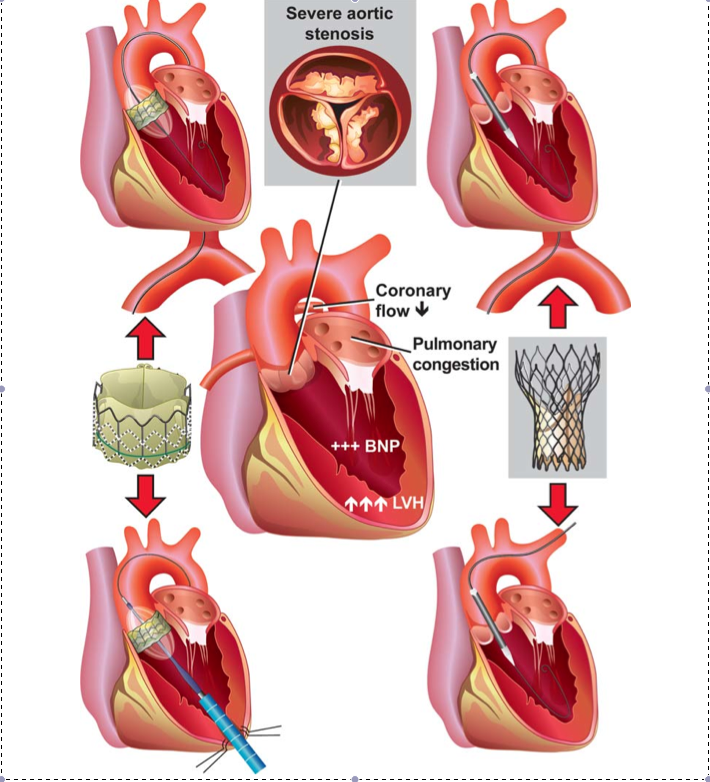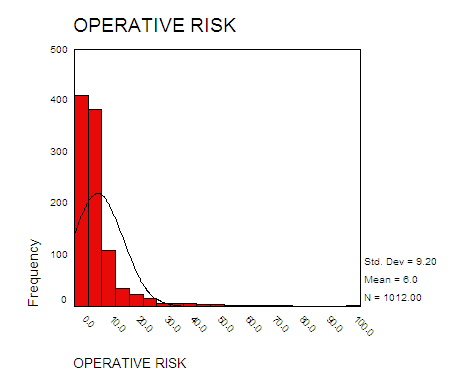There are many patients with severe aortic stenosis and coexisting conditions who are not candidates for surgical replacement of the aortic valve. For those patients trans-catheter aortic-valve implantation (TAVI) may be an option. Once severe aortic stenosis is diagnosed, a less than 50% survival rate in the first 2 years after symptoms appear is projected. Traditional Aortic valve replacement …
Treatment of Ischemic Heart Failure
Patients with heart failure caused by blocked coronary arteries, who are treated with bypass surgery reduce their risk of dying from heart disease, and also the risk of death from any cause or hospitalization from heart disease, compared with medication alone. “The trial supports bypass surgery on top of best medical therapy vs. best medical therapy alone to reduce cardiovascular …
Cardiac Surgery Risk Analysis
Since its first publication, our cardiac surgery risk calculator has proven very popular, with over 1000 completed questionnaires since August, 2010. Although the validity of the analysis is somewhat questionable, it has nonetheless shown some interesting results and showcases how this type of data can be utilized, especially if coupled with outcome analysis. I have made some assumptions: While …
SYNTAX and Bypass Surgery
Lessons learned from the SYNTAX trial after two years, the first surgical analysis paper of the SYNTAX trial has proven what I have blogged about on numerous previous occasions. The excellent results of 1% mortality, irrespective of the assigned SYNTAX Risk Score, compares VERY favorably with PCI. At two years better than expected outcomes have continued. As the EACTS 2010 …
Statins may improve your cholesterol but not your cardiac risks
Question: Do Statins really improve the risk of coronary artery disease? Answer: A paper published in this issue of the Annals of Internal Medicine, reviewed the association of statin therapy and cardiovascular outcomes, but found little difference between treated and untreated patients. As the current focus of statin therapy is to reduce low-density lipoprotein cholesterol (LDL-C), rather than increase high-density lipoprotein …
Rahm Emanuel and reducing health care costs.
Rahm Emanuel said today city workers should take better care of themselves — with City Hall’s help — as one way to save taxpayers money by reducing health care costs. In 2011, Chicago taxpayers will spend nearly $500 million on health care costs for city employees, their families and retirees, Emanuel said. If elected mayor, he said he is committed …
Low HDL and Cardiovascular Risk
Current national guidelines for CVD risk reduction are primarily focused on strategies to reduce levels of low-density lipoprotein cholesterol (LDL-C), with the most recent focus being on “lower is better” rather than an effort to increase high-density lipoprotein cholesterol (HDL-C). A careful examination of randomized, controlled trials (RCTs) using statins demonstrates that even with intensive statin therapy and intensive LDL-C …
VT-111 comments
LONDON, Dec. 16, 2010: In a press release by Viron Therapeutics about the protective effects of VT-111 during stenting, the CEO of the company announced: “Although the use of cardiovascular stents have dramatically improved the outcomes for patients with occlusive coronary artery disease, numerous studies have shown that the procedure itself can cause what is termed peri-procedural myocardial injury (PMI),” …
VT-111 results
Viron phase 2a data, published in leading cardiovascular journal, circulation: cardiovascular interventions. VT-111 results demonstrate statistically significant reduction in two key biomarkers of cardiac damage. LONDON, ON, Dec. 16 /PRNewswire/ – Viron Therapeutics Inc. today announced that the results of Viron’s Phase 2a trial for VT-111 were published today in Circulation: Cardiovascular Interventions. In the study led by Dr. Jean-Claude Tardif, …
Improper and unnecessary procedures
It has been a while since I have written about improper and unnecessary stenting. Articles in response to a US Senate Finance Committee statement earlier this week have re-activated my concerns about both these activities and the growing industry efforts to influence medical care. The case involves a Maryland hospital, a local cardiologist and a stent manufacturing firm. Other cases …



